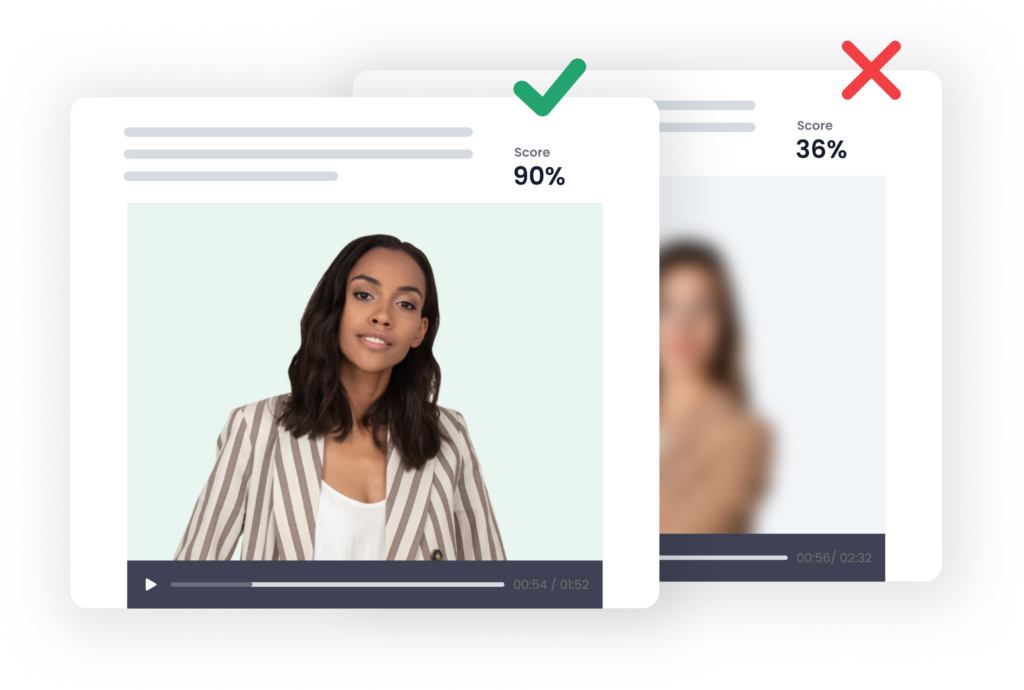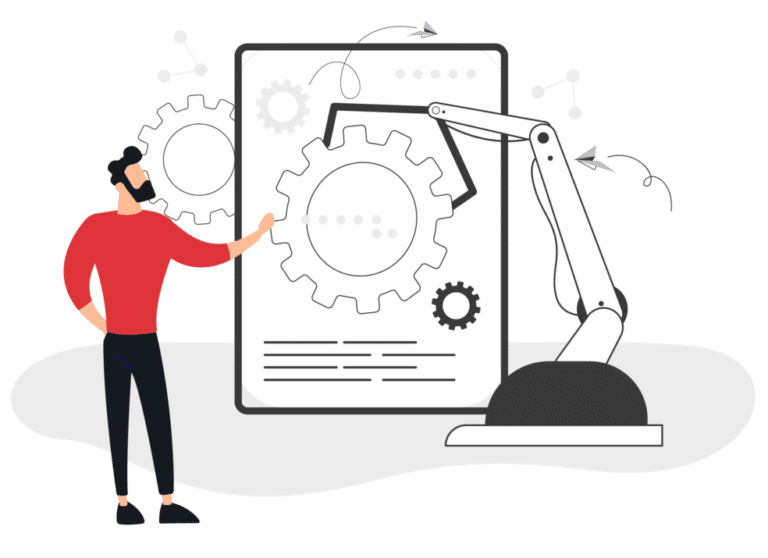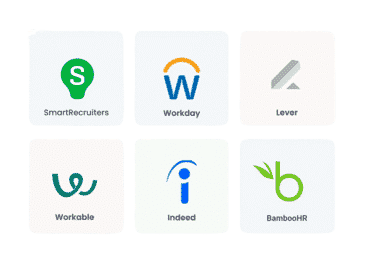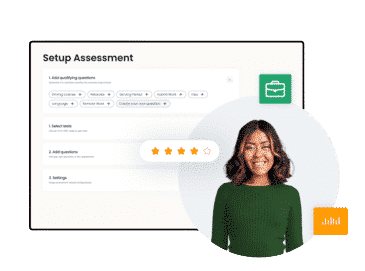Expedite recruitment with video interviews
Assessing candidates’ true potential and cultural fit is challenging as it’s hindered by limited insights from resumes, time constraints, subjective cultural fit assessments, and the overwhelming volume of applicants.
Video interviews aim to mitigate these challenges, providing more comprehensive insights for informed hiring decisions.

Smarter way to interview talent
Select from our suggested questions or create your own questions. Choose the completion time and number of attempts a candidate can take and also decide the maximum score for each question.
Assess candidates using video interviews without any hassle and offer an unmatched experience to your candidates.

Unbiased evaluation with auto-scoring
Our AI-driven assessment platform auto-scores video interviews with the added flexibility of manual scoring. Interact with candidates through video interviews to attain thorough insights into their skills and experience the effectiveness of automated scoring for instantaneous and precise evaluations.
Cut down the interview time
Before inviting a candidate for an interview, it is crucial to assess their confidence, communication skills, and cultural fit. By streamlining the recruitment process, you can reduce the time spent on interviews while ensuring that the right candidates are selected.


Craft impactful video interview questions
Craft questions tailored to the job role, highlighting critical skills and fostering creativity and adaptability while encouraging thoughtful responses that unveil the true potential of candidates. With video interviews feature, candidates can be asked to answer questions related to:
Versatility of video responses
Experience the dynamic nature of video responses as you visualize communication styles, assess non-verbal cues, evaluate presentation skills, and gain a deeper understanding of cultural fit through a single, versatile medium.

Simplifying candidate evaluation
Manage and evaluate candidate responses with our user-friendly platform. Navigate the complexity of candidate evaluation with our talent assessment platform and video interview questions feature. Simplify your assessment process, making informed hiring decisions with ease.
What more advantages do video interviews offer?
Video interviews is the best way to assess candidates.
We take care of the rest!
Frequently asked questions (FAQs)
Want to know more about Testlify? Here are answers to the most commonly asked questions about our company.



